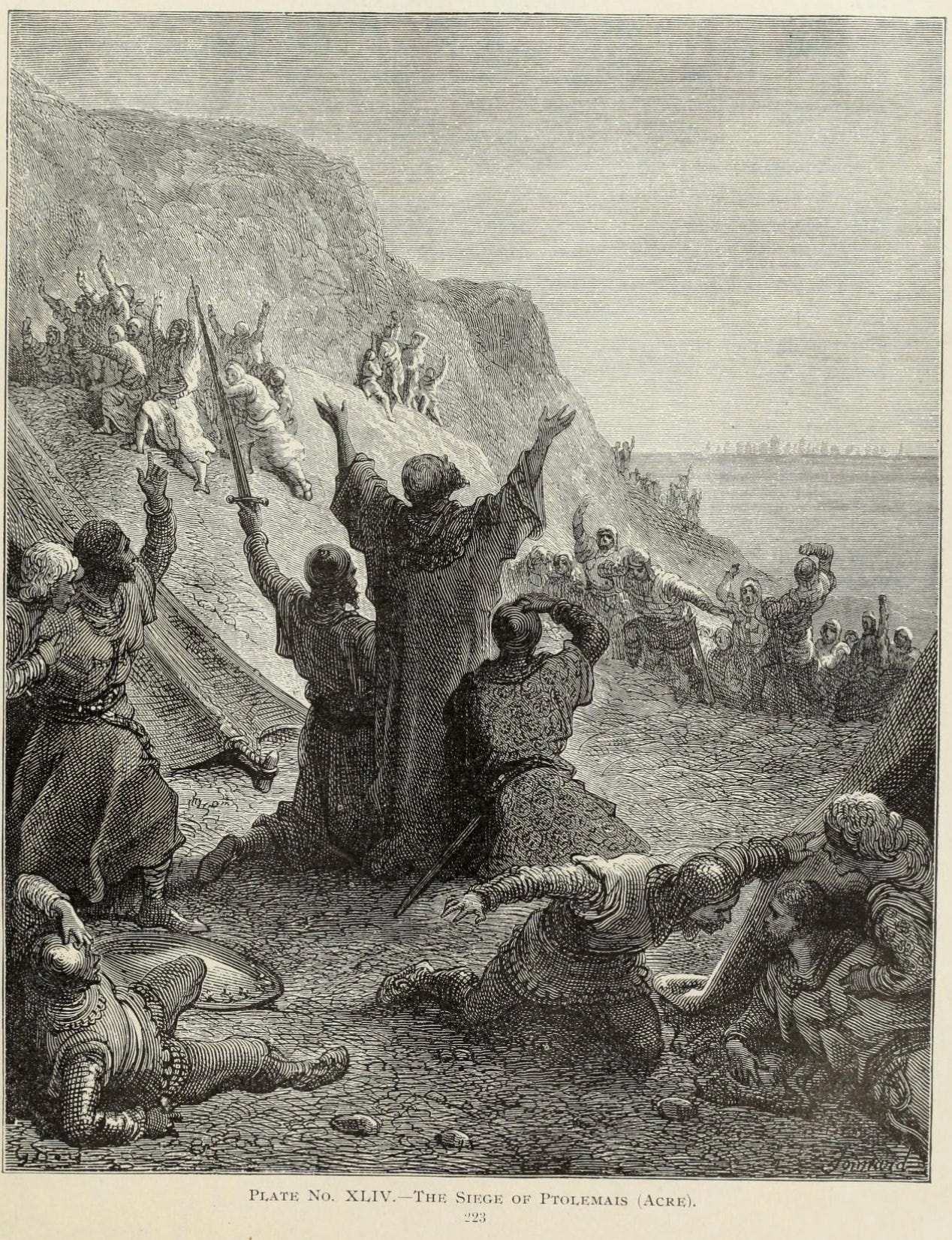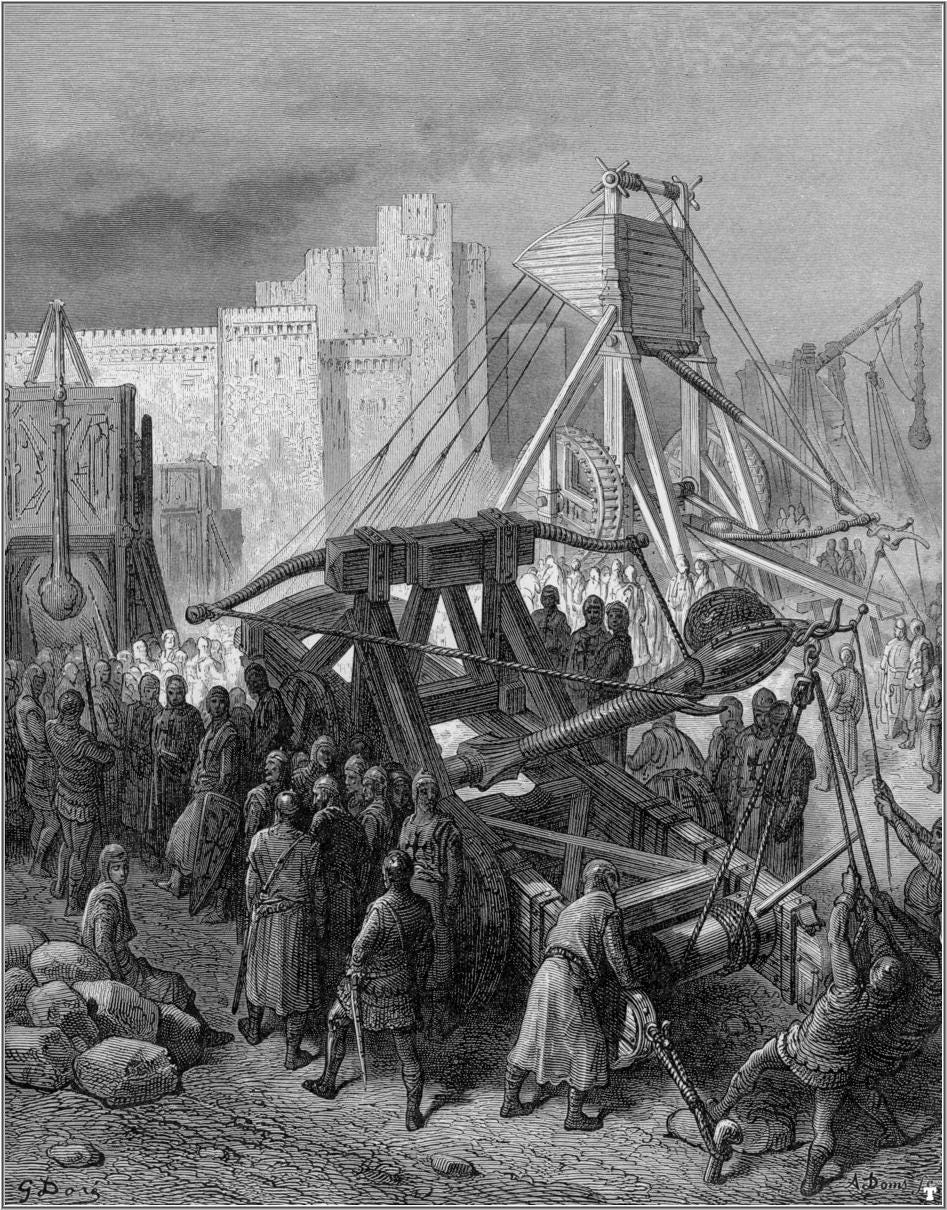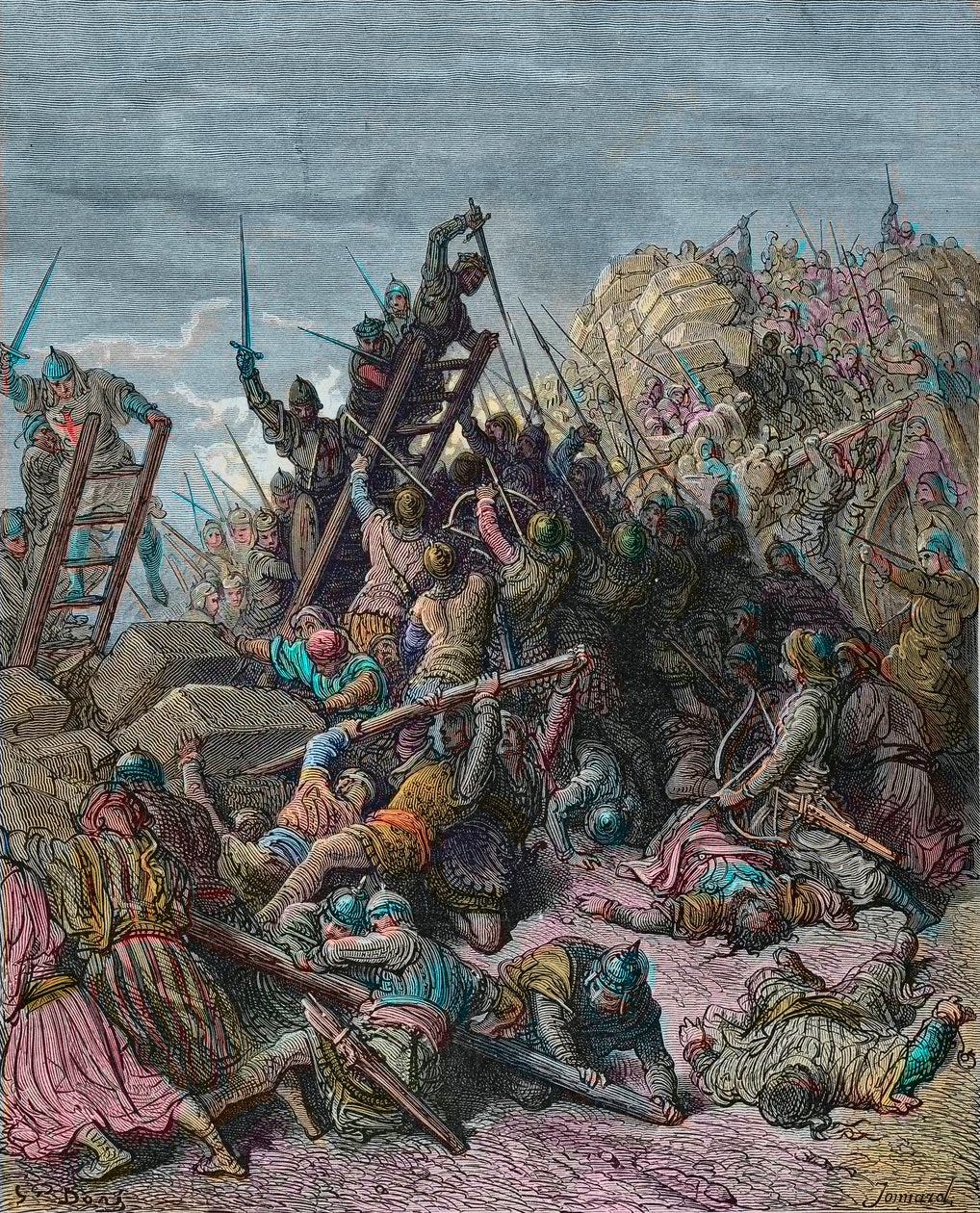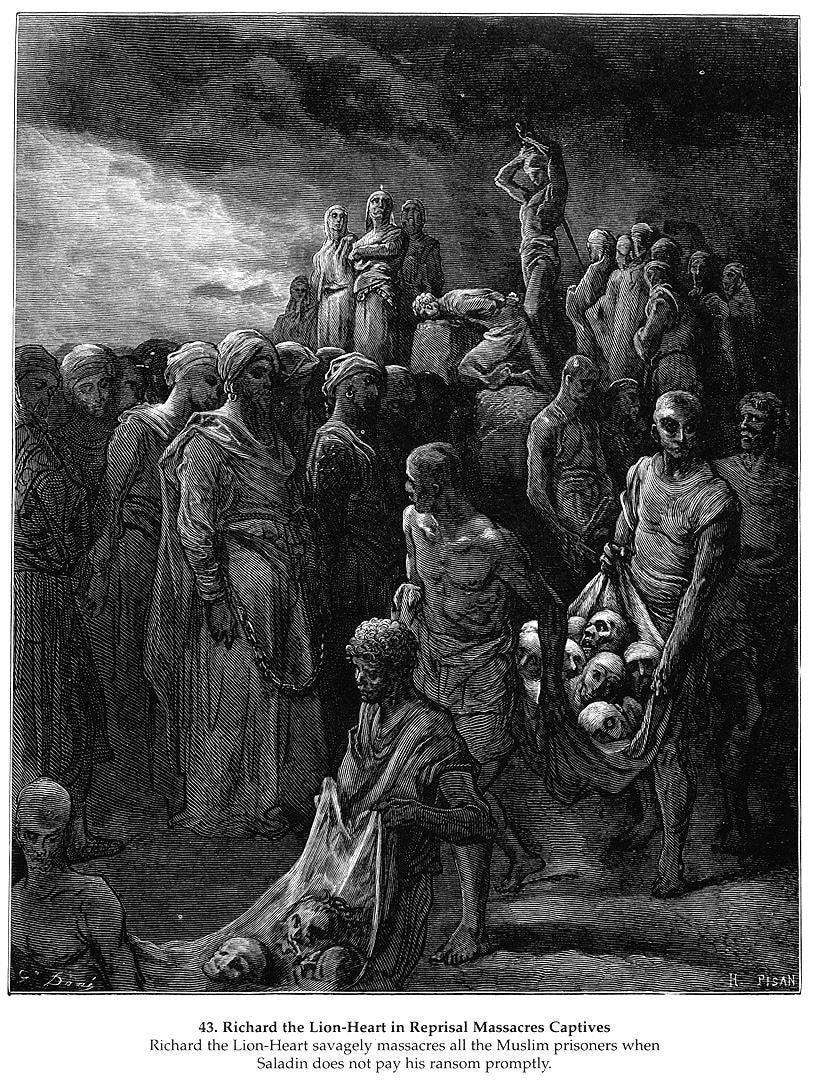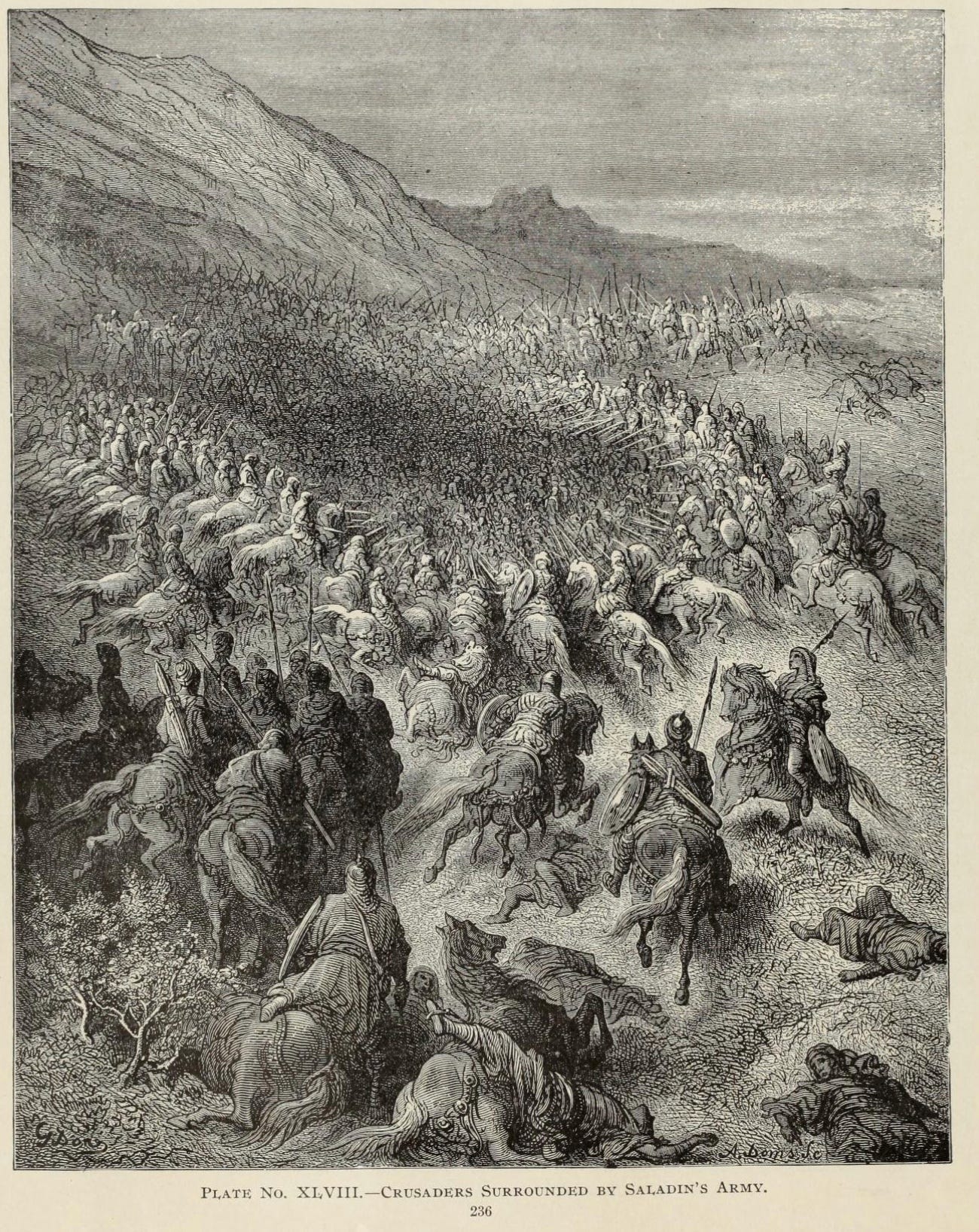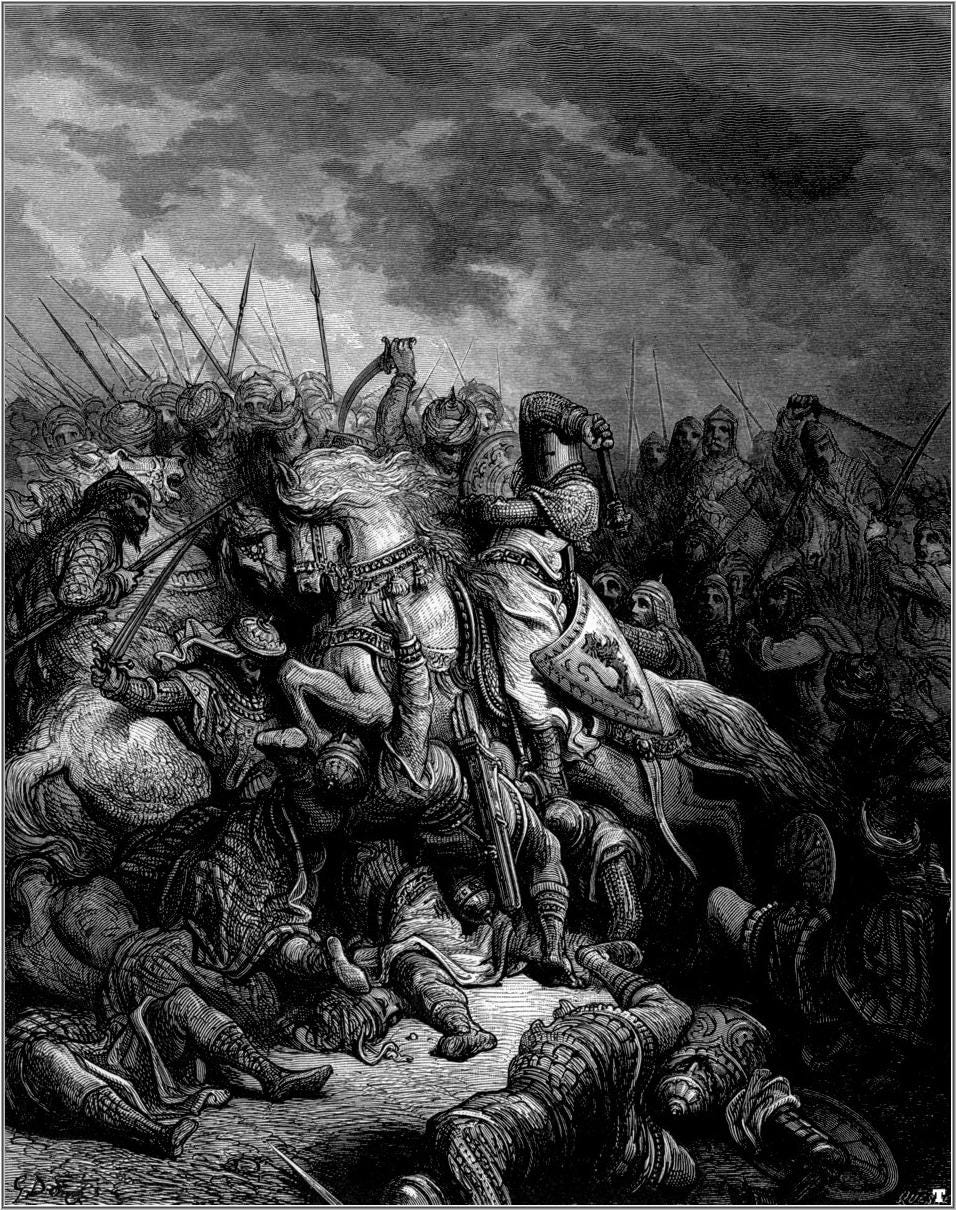The Crusade art of Gustave Doré
Gustave Doré (1832-1883) was a prolific 19th century French artist, remembered primarily for his detailed and dramatic wood engravings. He also worked as a painter and sculptor, but it was his illustrations for literary classics that brought him international fame. His distinctive style was characterized by compositions of epic scale and intricate detail, and a profound sense of atmosphere. He illustrated print editions of the Bible, Dante's Inferno, Milton's Paradise Lost, and other works. Of particular interest to us here are his illustrations of the Crusades, as his illustrations are part of Joseph-Francois Michaud’s History of the Crusades, published in 1877 and containing one hundred of Doré’s illustrations.
I find these engravings very evocative. I’ve used one of them as the cover for my edition of The Annals of Roger of Hoveden. Below, we have included some of the memorable works of art that illustrate the Third Crusade, the crusade led by Richard the Lionheart.
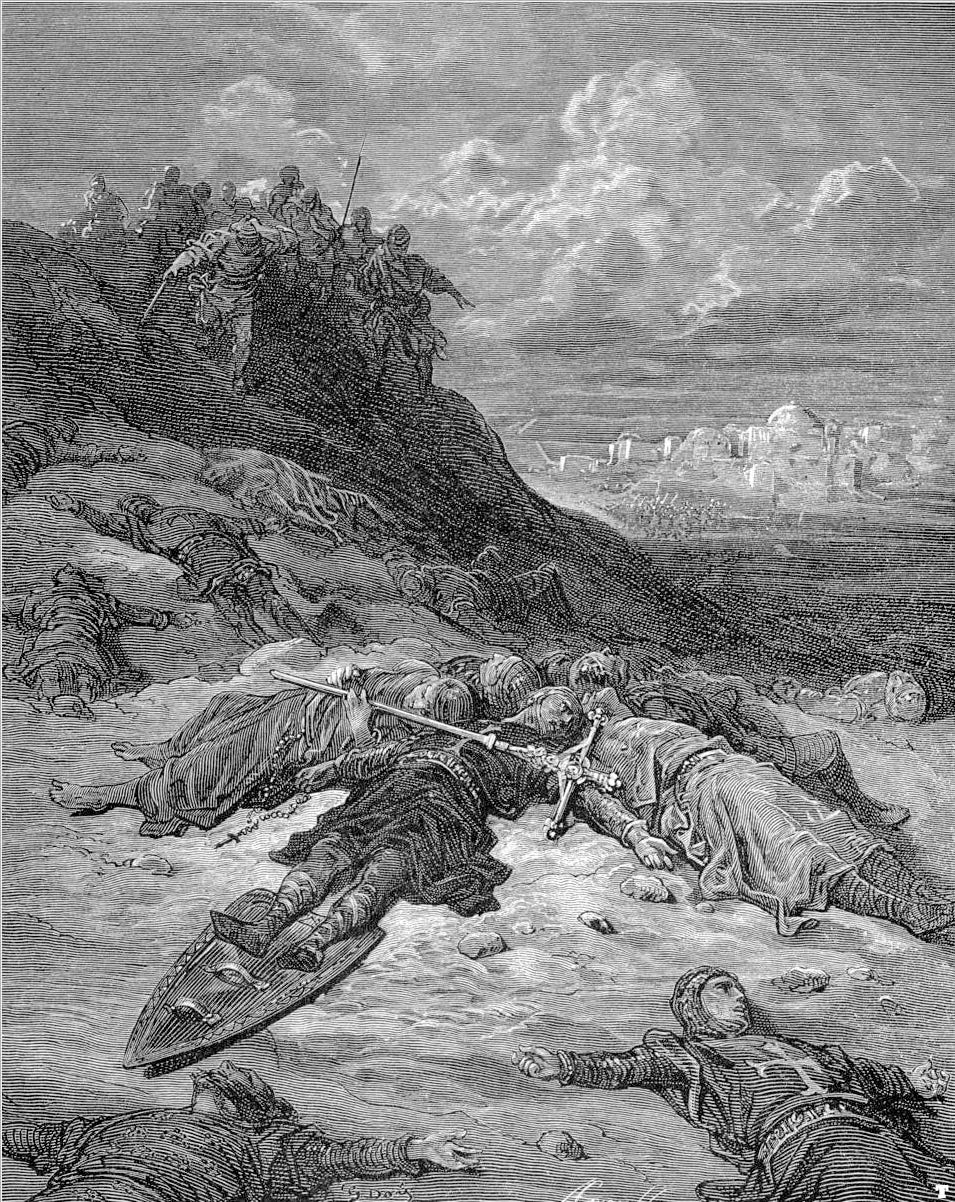
The Third Crusade had effectively been going on for some time before Richard arrived on the scene. Guy Lusignan (who we met last week as the leader of the attack on Eleanor of Aquitaine) had by now become King of Jerusalem, lost the battle of Hattin, and was leading the siege of Acre, which had been going on for the better part of two years. The crusaders were exhausted and starving, reduced to eating grass and possibly each other, when Richard arrived from Cyprus. Doré’s illustation below shows them celebrating as they see Richard’s ships on the Horizon.
The machinery of War:
After a small matter of weeks, and the application of Richard’s leadership, the Siege of Acre was broken and the city taken. Below is a scene from the assault.
After the siege, there were extended negotiations over the 3000 Muslim captives the Crusaders had taken. Saladin promised to ransom them, but failed to do so by the appointed date. Richard had the captives executed. In medieval terms, this was not necessarily out of the ordinary - Saladin himself executed hundreds of Knights Templar after the Battle of Hattin. But by today’s standards, we would call it war crime. Doré’s illustration captures the dark day.
Following the siege of Acre, Richard marched his troops down the coast, the Mediterranean on his right and Saladin’s troops on his left. There were running battles as they marched down the coast. Doré’s illustrations capture the battles, which culminated in the Battle of Arsuf, one of Richard’s great military victories.
Though Richard won many major victories, ultimately, the war was fought to a draw, and a negotiated truce. Richard sailed for home, promising to return. He shipwrecked in Austria and was taken captive by Leopold, Duke of Austria, whom Richard had deeply offended during the Crusade. Richard was held captive in a mountain fortress. Legend has it, with no real basis in fact, that Richard’s troubadour Blondel found him as he wandered through the country, singing a song only he and Richard knew. Blondel was said to know he’d found Richard when an answering chorus came from a castle window. Fanciful, certainly. Here’s Doré on the subject.
Hope you’ve enjoyed some fun pictures. Doré’s works have a unique and fastastical air to them. See more here:





